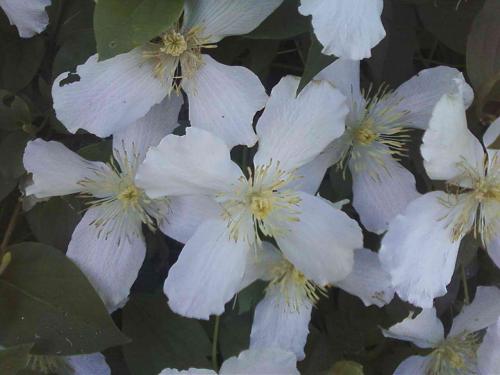It may not seem like the middle of winter is a good time for much gardening, but now that any unsold Christmas trees have been removed from nurseries, bare roots plants are moving in. They should be available through the rest of winter, until warming spring weather prompts bloom and emergence of new foliage.As the name implies, ‘bare root’ plants have bare roots. They are not contained within potting media (soil) in cans or pots. Some are wrapped in coarse sawdust to keep roots moist and contained without much weight. Others are simply heeled into damp sand at nurseries where they can be dug and wrapped when purchased.
Without cumbersome cans, bare root plants occupy less space in nurseries, so many more varieties of fruit trees, grapes, roses, berries and various ornamentals can be available bare root than could be available as standard canned stock during the rest of the year. Bare root plants have the added advantage of costing about half of what canned stock costs.
The main advantage of bare root plants though, is that they waste no time getting established in the garden. The process of getting dug, transported and replanted is done while plants are dormant. When they wake in their new homes in the spring, they immediately start to disperse new roots into the surrounding soil.
If bare root plants can not go directly into the garden once they arrive home, they should be heeled into damp soil or mulch and watered. If planting will be delayed only for a day or two, they can instead be put in a bucket of water to submerge the roots. Plants that are packaged in bags of damp sawdust can wait for more than a week in the shade.
Planting holes need not be any larger than the roots of the bare root plants. If soil is disturbed too deeply, it will only settle and possibly cause new plants to sink. Graft unions (which are evident as kinks low on trunks of trees, or where rose plants branch) should stay above the surface of the soil. Backfill soil should be amended only minimally, or not at all. Too much amendment inhibits root dispersion. (Roots may not want to leave amended soil.) There will be plenty of rain through winter. However, new plants should be soaked twice after planting to settle soil around the roots.
Finally, damaged or unnecessary stems can be pruned off. Bare root fruit trees come with more stems than they need, for padding in transportation, and to allow more options for pruning.
foliage of the week: Chinese evergreen
It is no coincidence that Chinese evergreen, Aglaonema, is perhaps the most common tropical plant for interiorscapes. It is quite easy to care for, and available in so many unique personalities. Many have rich deep green foliage. Most are elegantly variegated with white, silvery gray or gold. Leaf shape is quite variable, although most have rather narrow leaves radiating outward from dense rosettes. Leaves can be half a foot to more than a foot long, and a bit more than an inch to almost six inches wide. Mature plants are at least a foot tall and a foot and a half broad.
Indirect sun exposure or partial shade is best. Chinese evergreen likes humidity, so likes to share sheltered enclosed atriums with other lush foliage plants. New plants are easy to propagate by division.







